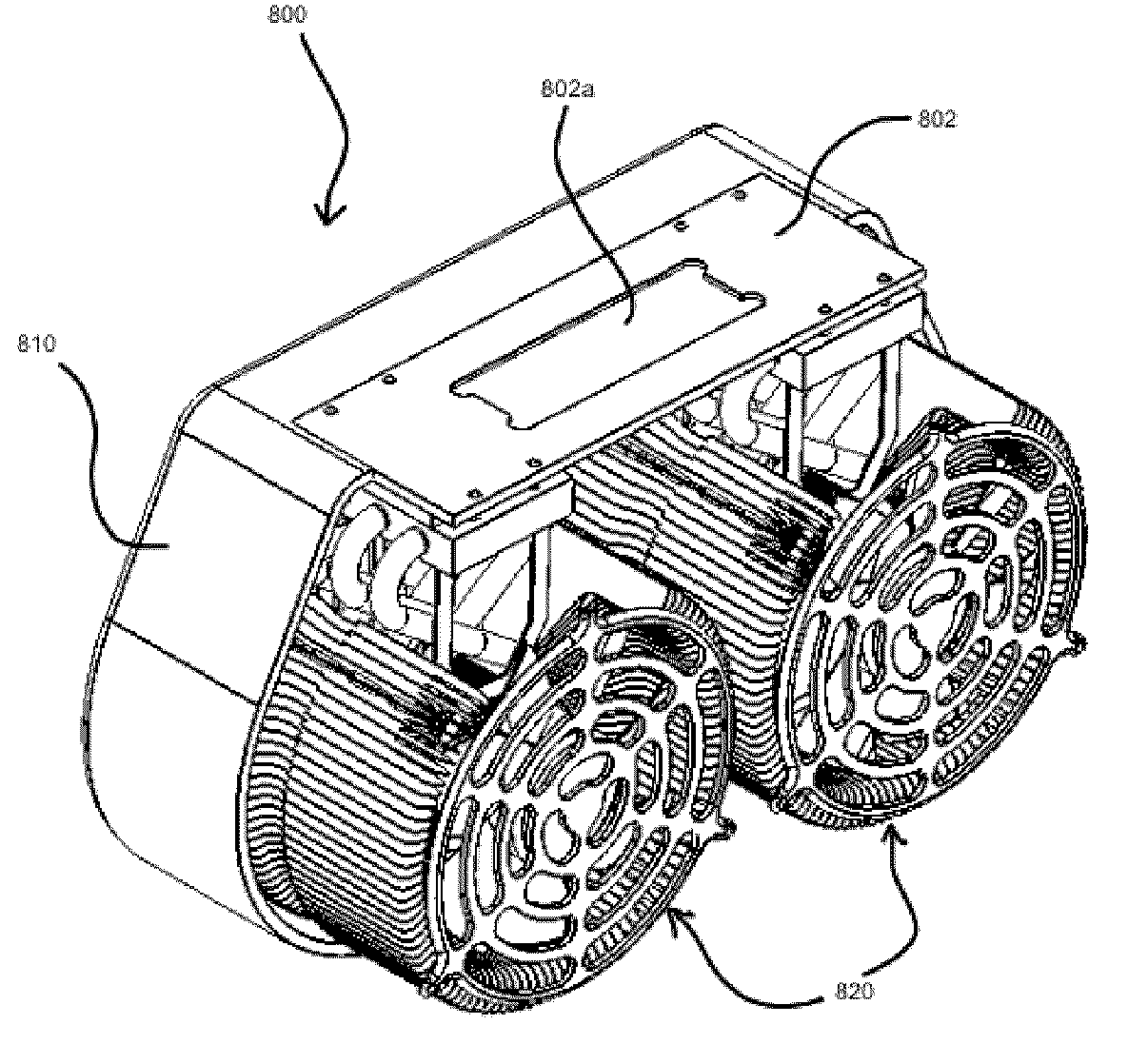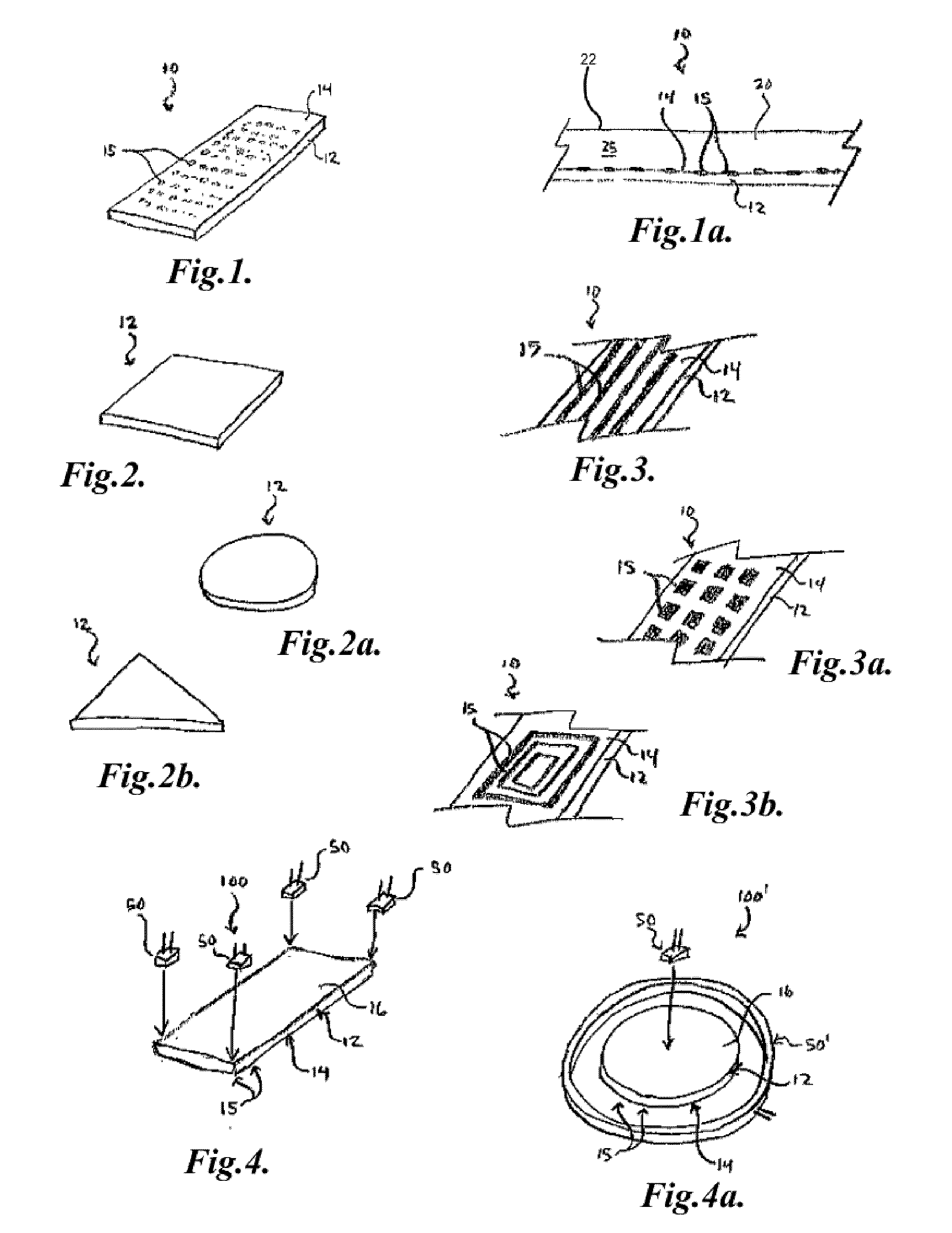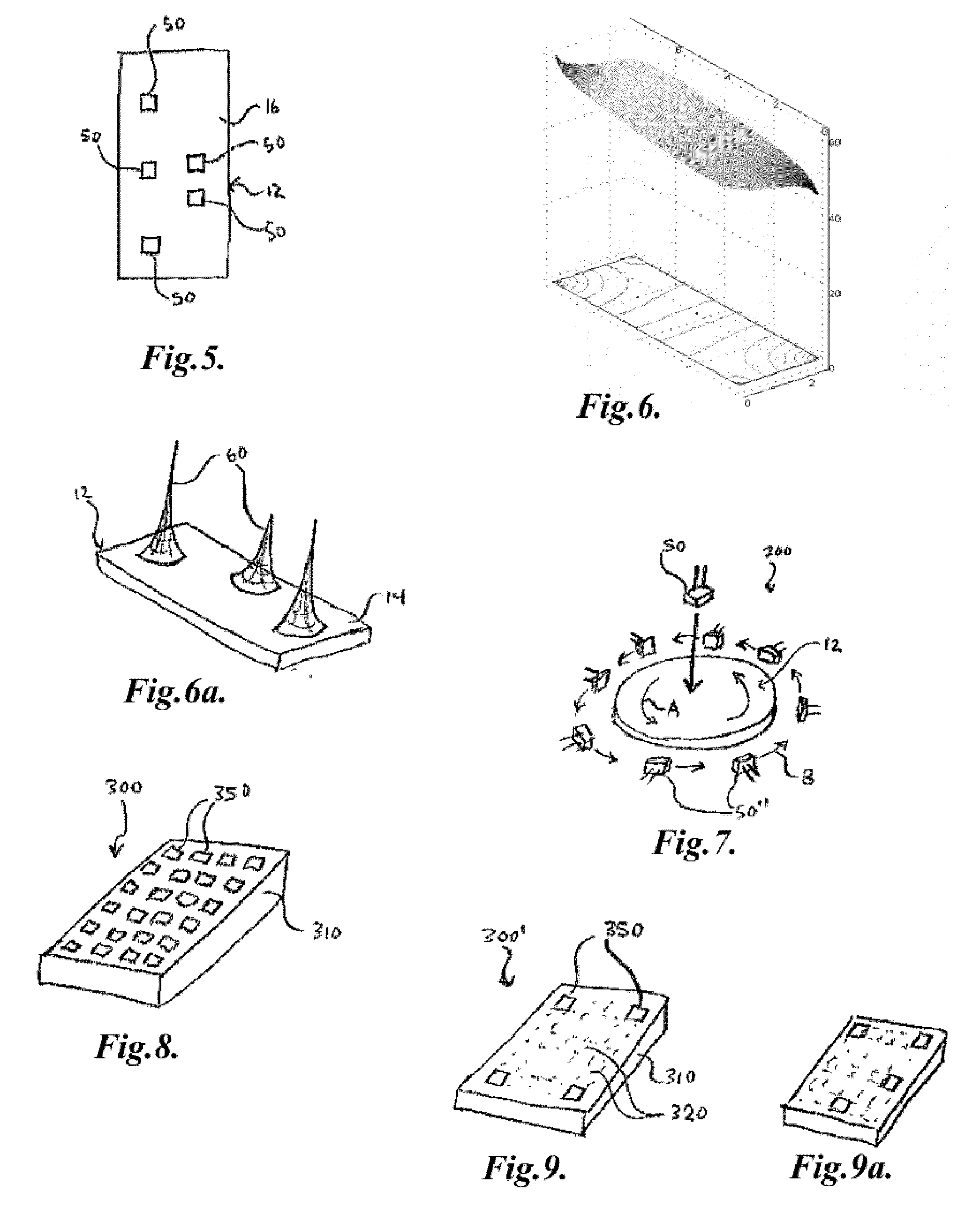Methods and devices for molecular association and imaging
a molecular association and imaging technology, applied in the field of molecular association devices and methods, can solve the problems of increasing background signal and compromising which probes, and achieve the effects of facilitating hybridization, increasing the diffusion rate of target molecules, and facilitating hybridization
- Summary
- Abstract
- Description
- Claims
- Application Information
AI Technical Summary
Benefits of technology
Problems solved by technology
Method used
Image
Examples
example 1
[0100]To simulate the typical Tm distribution for a large, randomized probe-set, a MATLAB program was written to randomly choose 44,000 compositions of 60-mer probes. These numbers were chosen in accordance with the microarray format sold by Agilent Technologies. The MATLAB script allows the user to choose a salt and formamide concentration for use with commonly used melting equations. The program also has the ability to bias the use of G and C versus A and T. The predicted Tm's had a binomial distribution, as shown in FIG. 14. In comparison to randomly selected compositions, FIG. 15 shows the melting temperature distribution for a large, commercially marketed probe set of 70-mers which has been filtered for Tm.
[0101]To simulate such a physical situation, the two-dimensional, steady-state heat conduction equations were solved in FEMLAB, a finite-element package integrated with MATLAB. A 1 inch×3 inch domain with a small subregion in each corner was drawn in 2D and the region was giv...
example 2
[0102]Various microarray providers recommend a number of mixing conditions during hybridization. Some protocols rely on an air-liquid interface for “bubble mixing”, and others rely on active pumping through a closed “chip” design. An alternative approach based upon temperature and gravity induced convection may prove superior in terms of both simplicity and compatibility with real time imaging. Rayleigh-Bernard flows (commonly observed in “lava lamps”) arise as a natural consequence of buoyancy driven instabilities that occur when a fluid is subjected to a temperature gradient. FIGS. 17b and 17c show the active convection induced by a 30° C. thermal gradient from the bottom to the top of a 1 mm quartz cuvette containing water and a small initial bolus of food coloring. Images were acquired at different times from several different experiments for best visualization of the typical flow. The inner face of one side of the quartz cuvette is meant to simulate the array surface. A charact...
PUM
 Login to View More
Login to View More Abstract
Description
Claims
Application Information
 Login to View More
Login to View More - R&D
- Intellectual Property
- Life Sciences
- Materials
- Tech Scout
- Unparalleled Data Quality
- Higher Quality Content
- 60% Fewer Hallucinations
Browse by: Latest US Patents, China's latest patents, Technical Efficacy Thesaurus, Application Domain, Technology Topic, Popular Technical Reports.
© 2025 PatSnap. All rights reserved.Legal|Privacy policy|Modern Slavery Act Transparency Statement|Sitemap|About US| Contact US: help@patsnap.com



